Nearly killed by a German bomb, Pyle faced the fear and frustration known as “Anzio anxiety” among the American soldiers trapped with him on the beach.
-
Summer 2023
Volume68Issue4
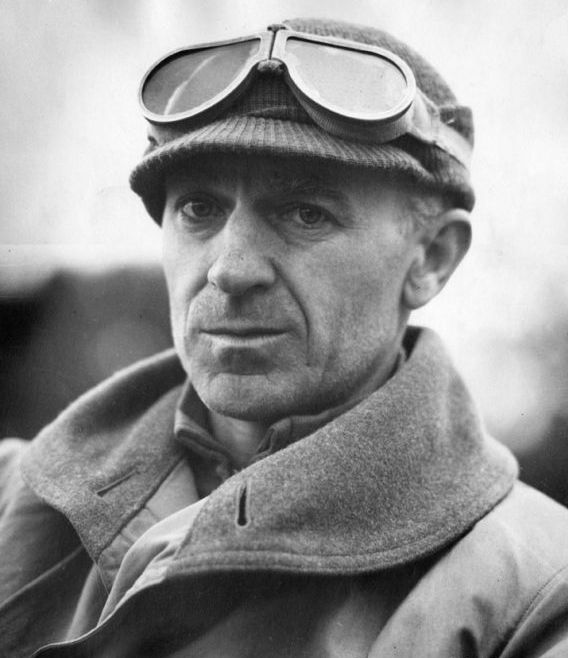
Editor's Note: David Chrisinger directs the Public Policy Writing Workshop at the University of Chicago, and is the author of several books, including The Soldier's Truth: Ernie Pyle and the Story of World War II, from which he adapted portions of this essay.
The dead men’s gear and clothing, mud-caked and bloody, was brought by the truckload, five or six per day, to a salvage dump near the beachhead that was managed by the army’s Quartermaster Corps. Black soldiers were tasked with the grisly job of sorting, classifying, and cleaning the litter.
“They poke through the great heap,” Ernie Pyle wrote, “picking out shoes of the same size to put together, picking out knives and forks and leggings and underwear and cans of C-rations and goggles and canteens, and sorting them into different piles.” Everything that could be used again would be sent back to Naples for restoration and repair.
As Pyle looked on, he felt tight-lipped and dejected. The inanimate objects shouted to him from the great pile. There was the helmet with a bullet hole. And an overshoe ripped to hell by shrapnel. Then there was an irreparably smashed portable typewriter. And a pair of muddy pants. One leg was gone.
“When you get to Anzio, you waste no time getting off the boat, for you have been feeling pretty much like a clay pigeon in a shooting gallery,” Pyle wrote in a column on March 28. “But after a few hours in Anzio, you wish you were back on the boat, for you could hardly describe being ashore as any haven of peacefulness.”
“This is a new kind of warfare for us,” Pyle continued. “Here, distances are short, and space is confined. The whole beachhead is the front line.”
Soldiers closest to the German defensive positions flattened themselves into shallow foxholes — which afforded neither comfort nor safety — necessitated by the high-water table. Soldiers closer to the coastline had it much better. The sandstone around Nettuno made it possible for enterprising soldiers to mine deep into the substrata.
See also “Agony and Triumph at Anzio” by Flint Whitlock in our Winter 2019 issue.
“Men have dug underground and built themselves homes,” Pyle reported; the subterranean shelters were complete with pilfered furniture and random bits of detritus that gave the warm and dry lairs a more homey, secure feel.
Back at his typewriter, Pyle’s fingers hurt from the cold. They were so stiff, he could barely peck at the keys. It was the middle of March, and spring had not yet sprung along the Tyrrhenian Sea forty miles south of Rome. “We’ll have one or two perfectly awful days, cold and dark and pouring rain,” Pyle wrote to his wife Jerry, “then about three days of beautiful sunshine and clear skies, warmish in midday, but cold at night.”
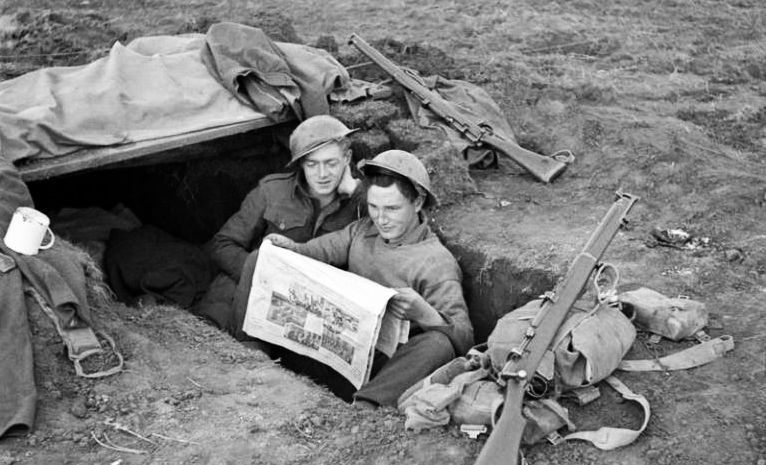
As seemed to be the case with the frontline soldiers in Italy, Pyle believed a change of scenery, and maybe a letter from home, could pluck him from a deep depression that had swallowed him whole. “I’ve been pretty low for a month and a half,” he wrote to his college friend Paige Cavanaugh on February 16. “Have felt so damn lousy, and no word from Jerry, and the fuckin’ war getting under my skin so bad.”
Pyle had landed at the Anzio beachhead at the end of February, over a month after 47,000 Allied troops had stalked across the soft sand, almost completely unopposed, on January 22. All told, the Allies suffered 110 casualties that first day, with only thirteen men killed in action.
The day after the invasion, Pyle’s friend and fellow correspondent Don Whitehead reported, “For several hours, we have been going around with our mouths open in amazement over the ease with which the Army and Navy managed to land troops behind enemy lines.”
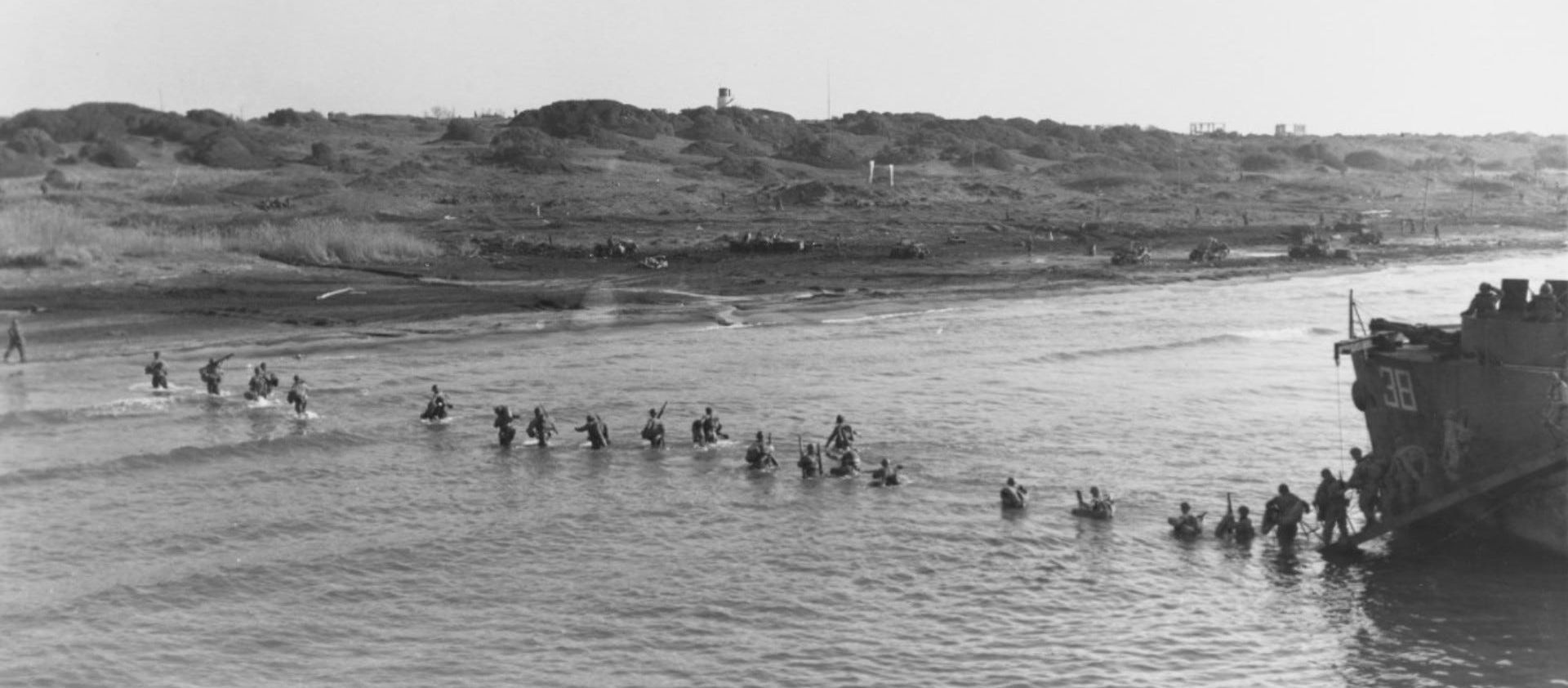
The conceptual framework behind Operation Shingle came straight from the top. In December 1943, Winston Churchill proposed landing two divisions of troops at Anzio to outflank the Germans clogging up the Liri Valley farther south. Either German forces on the Gustav Line would stay put — and Rome would fall — or they would be drawn into the fighting for the Italian capital, and General Mark Clark’s Fifth Army could finally break through at Cassino.
On the off chance that the Germans had adequate reinforcements to defend Rome and hold the Gustav Line, the Allies would nevertheless be engaging a sizable number of German divisions that would no longer be available to fight in France once the Allies invaded Normandy. It was a win-win-win, Churchill believed.
But after the landing, American General John P. Lucas, who had little confidence in the planning behind the invasion, decided to halt his troops’ advance a few miles from the coastline. Wanting to avoid what happened when the Allies landed at Salerno the previous fall — when the Germans nearly pushed the thinly spread Allies back into the sea — Lucas refused to break out of the tiny beachhead and sprint toward Rome until his position on the beachhead was consolidated and he had enough men and supplies to push back against whatever the Germans threw his way.
In the early days after the invasion, it had appeared, to Don Whitehead of the AP that “the planners of this operation conceived a brilliant one, for it has gone better than anyone could have dreamed.” The way in which the Allies had “gouged a hole in a short time and consolidated their position leaves no alternative but to be optimistic,” he told his readers. “Men, guns, armor, and supplies have poured across the beach in an unbroken flow and in such proportions that no one I have met has any fears that the Germans will ever be able to threaten a breakthrough such as endangered the Salerno beachhead.”
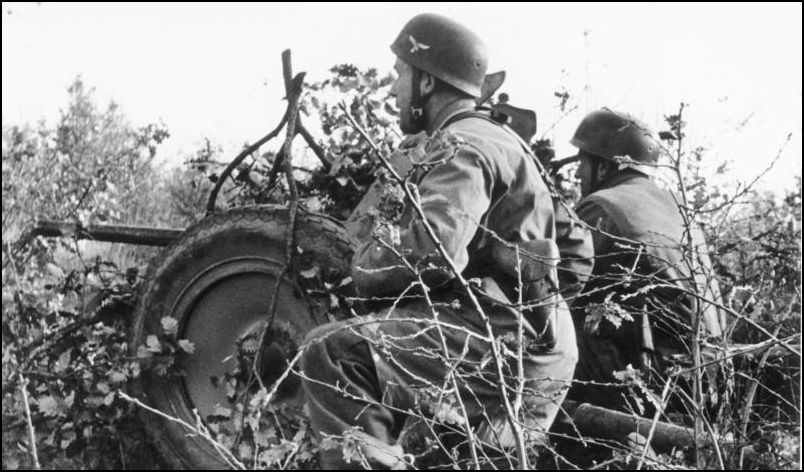
As was often the case during the Italian campaign, however, appearances were deceiving. By the time Pyle arrived at what the soldiers dug in there were calling the “Anzio bitchhead,” the exhausted Allies were mired in a bloody stalemate. And there was no end in sight. By waiting to consolidate his forces at the beachhead, General Lucas “achieved the worst of both worlds,” wrote the military historian John Keegan, “exposing his forces to risk, without imposing any on the enemy.”
Churchill was more poetic, and emphatic: “I had hoped we were hurling a wildcat onto the shore,” he cabled Field Marshal Alexander, “and what do I find? A whale wallowing on the beaches!”
Pyle had decided against embedding with the initial invasion forces at Anzio. “You will understand by the time you get this letter,” he wrote to his longtime friend and editor Lee Miller from Naples. “If I’m going to get killed, I’d rather wait and do it on a bigger show, such as France.”
In a letter to his wife Jerry, he was less dramatic in his reasons for skipping the landing. “I didn’t go on the amphibious landing below Rome which you’ve now read about in the papers, partly because everybody’s stuff had to be pooled and you can’t very well pool a column, partly because I still had too much cold, and partly because I didn’t want to.”
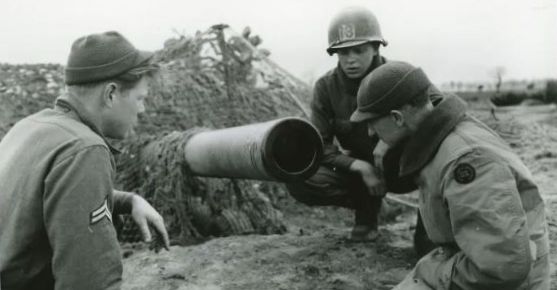
After checking out the front lines near Cassino, Pyle planned to fly to London and prepare for the eventual invasion of western Europe. “I read in Stars & Stripes today that there are now 160 correspondents in England to cover the invasion,” he wrote to Jerry. “I suppose there’ll be 200 by the time it happens.” Jerry needn’t worry, Pyle assured his wife: “If and when it does come off . . . I don’t intend to go over very early in the game.”
Pyle’s initial reluctance to land with the first waves in France may have had something to do with the death of his dear friend and fellow Scripps-Howard columnist Ray Clapper. On February 1, 1944, the carrier plane Clapper was riding in collided with another plane over the island of Eniwetok in the North Pacific. Clapper had been in the Marshall Islands to cover the Allied invasion there. “Both planes crashed into a lagoon,” a news report said; no one aboard either plane survived.
“I’m so upset by it, I can hardly think,” Pyle wrote to his secretary, Roz Goodman. “It gives me the creeps, and makes more dominant that perpetual feeling we all have of ‘When will my turn come?’”
To his editor, Pyle was even more forthcoming about how overwhelmed he was beginning to feel: “The whole thing is getting pretty badly under my skin. I’ve got so, I brood about it, about the whole thing, I mean, and I have a personal reluctance to die that is always in my mind, like a weight. Instead of growing stronger and hard, as good veterans do, I’ve become weaker and more frightened. I’m all right when I’m actually at the front, but it’s when I pull back and start thinking and visualizing that it almost overwhelms me. I’ve even got so, I don’t sleep well, and have half-awake hideous dreams about the war.”
The only thing stopping him from coming home for good was the thought that he wouldn’t be able to live with himself if he did. “If I can just see the European war out,” he confessed to Lee, “I think I might feel justified in quitting the war.”
German Field Marshal Kesselring was surprised by the Allied landings at Anzio. But he was not unprepared. Expecting that the Allies would eventually try to outflank his forces along the Gustav Line, Kesselring had developed plans to counter seven different possible Allied advances. Before the sun came up on January 22, he initiated Operation Richard, which he had designed to repel an invasion that threatened Rome, dispatching a Panzer division and another division of parachute troops to defend the roads leading from the beachhead to the Alban Hills.
At the same time, the equivalent of more than three divisions were released from France, Yugoslavia, and Germany to join the German troops already in Italy. “Appreciating the importance of stopping the invading forces before they could advance inland,” wrote the military historian Flint Whitlock, “Kesselring was moving whole regiments and divisions around like chess pieces, preparing for the moment when he could unleash a heavy counteroffensive that would block this new threat and turn this impertinent invasion into an unmitigated Allied disaster.”
By January 25, the Germans had surrounded the high ground around the Allied beachhead. Every square inch of the beachhead was visible to the German defensive positions, and every square inch was vulnerable to German artillery. By the time Pyle arrived at Anzio, the waterfront villas had been chewed up by all manner of German artillery, and the beaches were scarred with craters. In the first month alone, more than 40,000 soldiers from both sides of the line were wounded or killed—a casualty rate of about 20 percent.
“Anzio was a fishbowl,” one soldier wrote in his diary. “We were the fish.”
After two weeks in Anzio, Pyle wrote to Jerry about his affection for life on the beachhead. “When I came up,” he told her, “I only intended to stay five days, but found it much more interesting and, in a way, more satisfying than being on the Cassino front or in Naples, so I just stayed on. It’s pretty dangerous here, as the entire beachhead is under shellfire, but there’s a spirit about it that I like better than the other fronts, and my own spirits are better up here.”
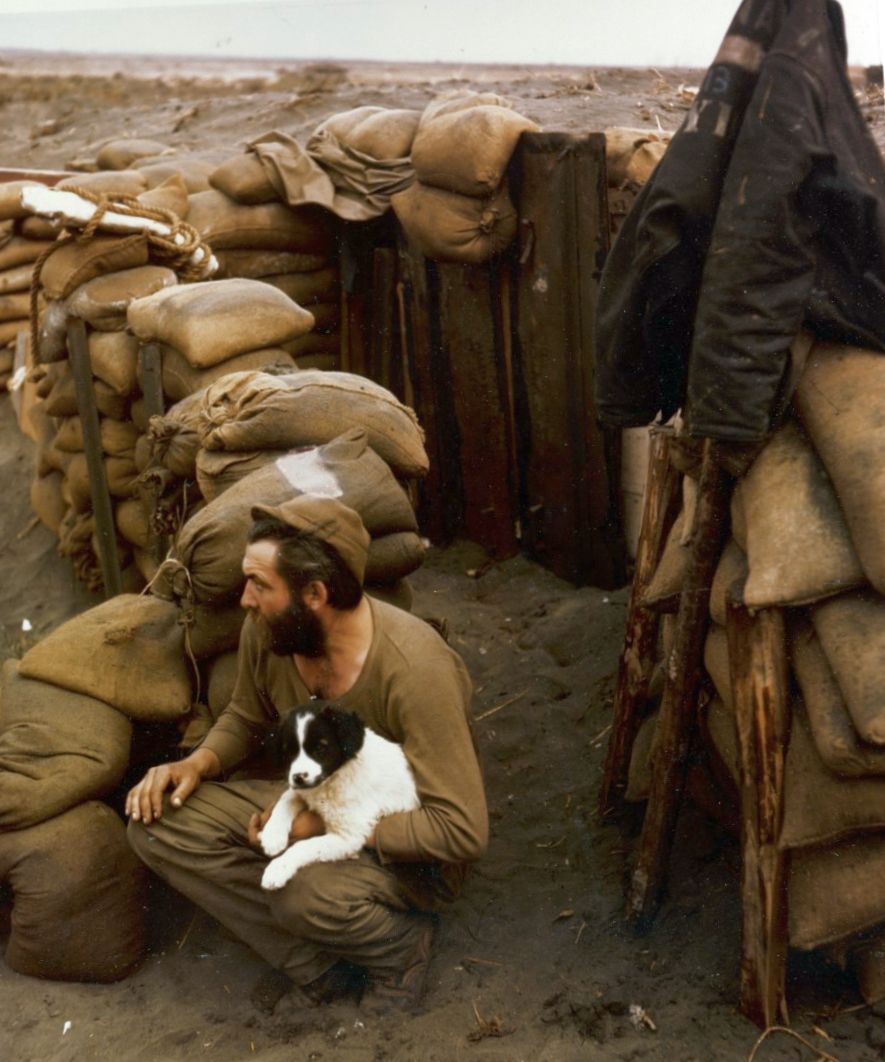
The censors at Anzio were capricious in their efforts to hide bad news from the folks at home. Under the front-page headline “Allies Give Ground “on February 6, 1944, The New York Times’ Milton Bracker wrote without hope, “The overall picture of the 156-day-old battle of Italy is not overly encouraging and it is time to say so.”
After stories like Bracker’s had been published, Field Marshal Harold Alexander, acting under orders from Churchill, shut down the radio transmitter that the signal corps had been using to send dispatches back to editors in the States. Churchill was furious that so many alarmist reporters were claiming that there was little chance the invasion forces would ever break out of the beachhead. In the House of Commons, Churchill preached, “Such words as ‘desperate’ ought not to be used about the position in a battle of this kind when they are false. Still less should they be used if they were true.”
In Washington, DC, the Secretary of War, Henry L. Stimson, struck a more conciliatory tone that nonetheless backed Churchill. The correspondents had been too pessimistic, he said. In the future, they should remember the adage: “Keep your shirt on.”
On February 15, the British general of the army Alexander met with a group of correspondents and tried to set them straight on the reality, as he perceived it: “There is absolutely no Dunkirk here,” he said. “There’s no basis for pessimistic rubbish. I assure you: the Germans opposite us here are a very unhappy party. (They) realize they’ve lost the battle, though events have not gone as swiftly as we ourselves hoped.” Only after the momentum of the battle seemed to have shifted in the Allies’ favor was the radio transmitter reopened.
Casualty lists and the shock of bad news can do one of two things: either they make a nation angry and determined, or weary and depressed. Churchill and Stimson feared the latter; the British and American public, in their eyes, still were not psychologically prepared to accept the cruel facts of war.
Years after he returned home from Europe, CBS’s Eric Sevareid thought back to the decision to shut down the radio transmitter at Anzio and empathized. Had the correspondents accurately described the truth of what the Allies were being forced to endure at Anzio, there would have been a public outcry, he believed, to stop the “senseless slaughter.”
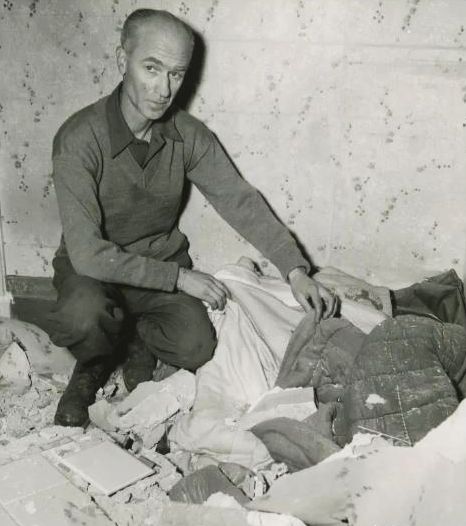
The death that plagued Pyle’s dreams nearly became reality at Via Gramsci 35 in Nettuno on St. Patrick’s Day 1944. At about seven o’clock that morning, he woke up and rubbed the sleep from his eyes. The rest of the four-story seaside villa slept. As he laid in his bed on the top floor, Pyle’s limbs were weak. He had too little energy to do anything but think. It was a welcome relief from a constant state of weariness, just to be warm in bed with nothing but the sound of pulsating waves and the smell of the sea.
A few minutes after he woke up, booms from an Allied anti-aircraft battery nearby barked into the sky. The rambling villa he shared with about a dozen other correspondents trembled. With his steel helmet cocked to the side, Pyle stood at his window, smoking the day’s first cigarette, watching the ack-ack with resigned cautiousness.
At the same moment, a German bomber dropped two five-hundred-pound explosives that slammed into the muddy ground only thirty feet from the villa. The terrible power of the blast blew apart two of his bedroom walls and crushed Pyle’s still-warm bed with a thousand pounds of rubble. Broken glass sprayed the room, and a thick cloud of dust covered everything, including Pyle’s portable typewriter, which he had perched atop a skinny desk in the far corner of the room.
Trembling with a weakness in his joints, unsure if he was even still alive, he rose to his feet and patted his stomach and chest, searching for blood. Nothing. His breathing was short and jerky; there was an empty feeling in his chest. He reached next for the top of his head as the adrenaline flooded through his veins. His helmet had been blown off. All his fingers felt was dust, shards of glass, and wisps of greasy hair. Then he found blood from a tiny cut on his right cheek.
“No, I didn’t get the Purple Heart, and don’t want one, you fuckin' hero-worshiper,” he later replied to his best friend from college, Paige Cavanaugh. “You have to go to the first-aid station and cry, and then you get one. I didn’t go cry; a sergeant just came along and spit on his dirty handkerchief and wiped the blood off my face and put some iodine on it.”
“When our bombing was over,” Pyle later told his readers, “my room was in shambles. It was the sort of thing you see only in the movies. More than half the room was knee-deep in broken brick and tiles and mortar. The other half was a disarray all covered with plaster dust and broken glass.”
When the other correspondents saw that he was all right, they laughed and called Pyle “Old Indestructible”—the luckiest man they knew.
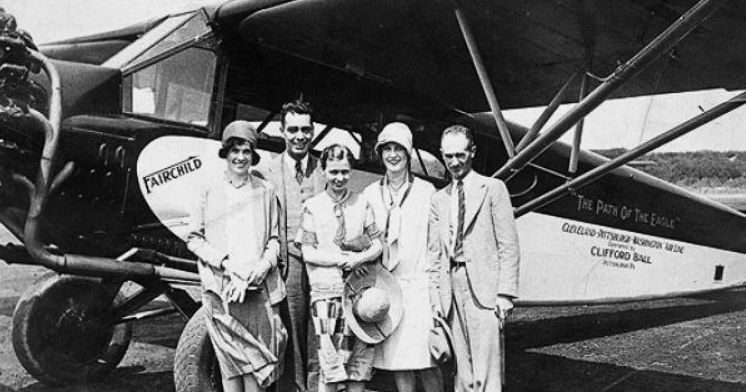
“By mid-afternoon, I felt very old and beat up,” he later reported, “and the passage of the afternoon shells over our house really gave me the willies.” Like so many of the “goddamned infantry” dug in on the beaches below his villa, Pyle had come down with a case of “Nettuno neurosis.”
Also known as “Anzio anxiety,” some cases were so severe that the sufferer had to leave the beachhead for a rest. The easiest way to detect such neurosis or anxiety in others was by what Pyle called “that stare.” In one of his more poetic columns, he repeated the phrase “It’s a look” at the beginning of three sequential sentences to describe that gaze.
“It’s a look of dullness — eyes that look without seeing, eyes that see without transferring any response to the mind. It’s a look that is the display room for the thoughts that lie behind it — exhaustion, lack of sleep, tension for too long, weariness that is too great, fear beyond fear, misery to the point of numbness, a look of surpassing indifference to anything anybody can do to you. It’s a look I dread to see in men.”
Most soldiers with that look would, according to army doctors, be all right after a few days away from the big guns. “It’s one of the perpetual astonishments of war life to me that humans recover as quickly as they do,” Pyle assured his readers. “You can take a unit that is pretty well exhausted, and if they are lucky enough to be blessed with some sunshine and warmth, they’ll begin to be normal after two days out of the line.”
Only a small minority of the soldiers Pyle described as “extreme shock cases” had to be locked away on hospital ships in padded cells with a steel door.
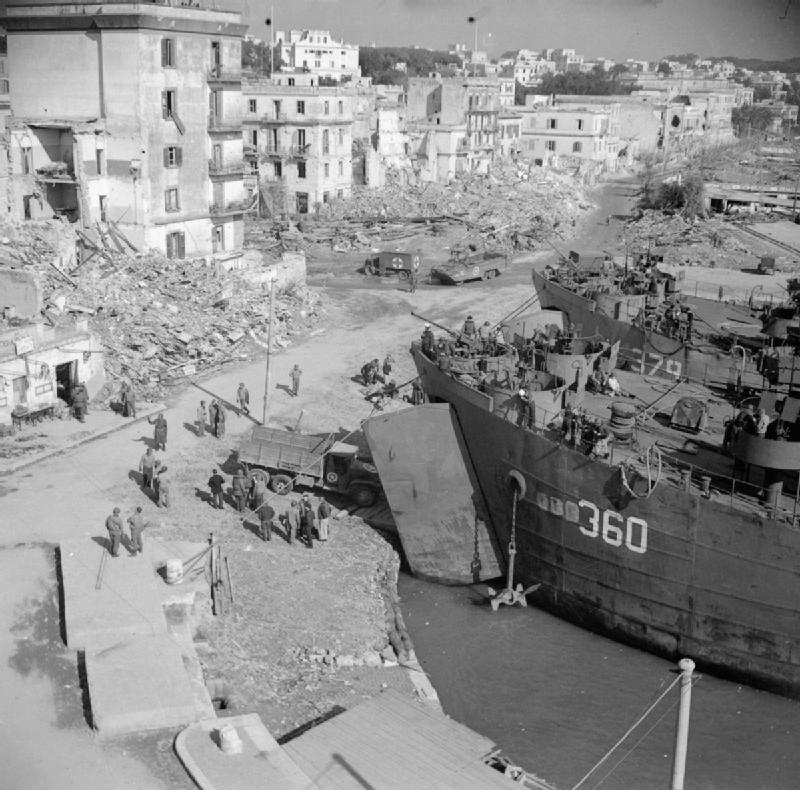
Before the war came to Italy, Anzio and Nettuno featured serene waterfront cafés and restaurants, garish bathhouses, and a stunning ancient harbor. “Anzio is where Nero is supposed to have fiddled while Rome burned,” he wrote soon after he arrived, “but in more recent years, he would doubtless have been sprawling in a deck chair on the patio of his seaside villa, drinking cognac.”
Today, in the crowded, narrow streets of Anzio and Nettuno, there often isn't a seat to be found in any of the seaside eateries, nor a parking spot. There are no reminders of the death and destruction that occurred during the late winter and early spring of 1944. The pastel-painted shops and cafés facing the water are alive with the fishy, herbal smell of zuppa di pesce, and the sounds of pop music, easy conversation, and laughter. Nettuno’s quiet harbor is filled with hundreds of sailboats, their masts bobbing gently.
A few hundred yards in from the water’s edge, a solid flank of fine stone and stucco buildings stand four or five stories high. Via Gramsci, the main road along the coast, is bracketed by sidewalks laid with cobblestones.
The villa where Ernie Pyle almost met his end is still there, clad in peach-colored stucco and trimmed with cream-colored stone. Two ornate balconies overlook the street, which is often choked with parked cars and a steady stream of slow-moving traffic.
The sand below the villa is flat, gray, and hard as concrete. The soothing sound of gentle surf massaging the sand is a comfort, at first. Then, walking along the sea’s edge, some visitors think about life on the beaches during that miserable winter of 1944, about the young lives snuffed out capriciously. Life at Anzio was not so separated from death; they were knit as tightly as the threads in a carpet.
“It must be an awful thing,” Pyle wrote later, “to go up to the brink of possible death in the nighttime in a faraway land, puzzled and afraid, knowing no one and facing the worst moment of your life totally alone.”
By empathizing with the American infantrymen, by helping make sense of their defeats and their deaths, Pyle helped to maintain morale and stir up the American public to do all that they could to help finish the fighting so that their boys could finally come home. The war was messy and confusing and necessary. There was no place for judgment.
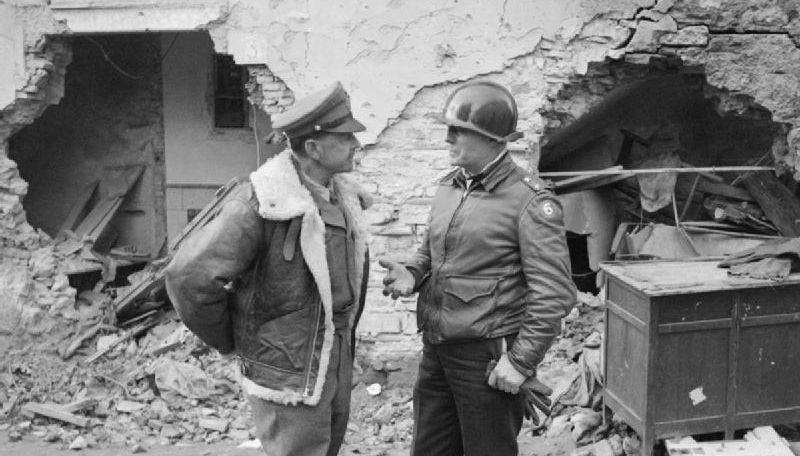
Pyle stayed at the beachhead for another week after the bombing that destroyed his room and left him “pretty jumpy.” But he needed a little time to get his nerve back, he told Jerry — and his self-respect. He boarded a hospital ship bound for Naples, along with five hundred wounded men. At least he was buoyed by the fact that his book Here Is Your War had sold over 225,000 copies, and his column was now being published in 270 papers, second only to Drew Pearson’s “Washington Merry-Go-Round” and Walter Winchell.
On April 5, he boarded an army cargo plane in Naples, final destination London. “There’s such a thing,” he wrote, “as pressing your luck too far in one spot.” The fighting he left behind at Anzio would last for another two months.
Had slashing away at the underbelly of Europe been worth the suffering? The commanders and politicians responsible for the campaign believed it was. “Our war of attrition is doing its work,” President Roosevelt said of the Mediterranean strategy. The value of that work, Field Marshal Alexander later wrote, “must be expressed not in terms of the ground gained, but in terms of its effect on the war as a whole.”
By the time Rome fell on June 5, 1944, six of Kesselring’s divisions had been badly bloodied, and a total of 55 German divisions that might otherwise have been used to reinforce the French coastline in Normandy were instead deployed along the Mediterranean fronts to thwart any further encroachment on Hitler’s Reich. Nearly a decade after it ended, Churchill wrote of the Italian campaign: “The principal task of our armies had been to draw off and contain the greatest possible number of Germans. This had been admirably fulfilled.” The Allies had devoured the German army, he stated unequivocally. “There have been few campaigns with a finer culmination.”
Historians of the Second World War have been much less laudatory in their analysis of a campaign that was so poorly planned and incompetently commanded. David M. Kennedy called the campaign “a needlessly costly sideshow” and a “grinding war of attrition whose costs were justified by no defensible military or political purpose.”
Historical debates aside, for those soldiers who survived the misery, destruction, and frustration that defined the Allied campaign in Italy, it took time, introspection, faith, and a little imagination to justify or give meaning to what they were forced to endure. Ernie Pyle was no exception. “There has been some exhilaration here and some fun, along with the misery and the sadness,” he wrote of the Italian campaign in a column published on May 4, 1944, “but on the whole, it has been bitter. Few of us can even conjure up any truly fond memories.”
While there seemed to be no way to rationalize what had happened during the campaign, Pyle took his best shot: “I look at it this way,” he told his readers. “If, by having only a small army in Italy, we have been able to build up more powerful forces in England, and if, by sacrificing a few thousand lives here this winter, we can save half a million lives in Europe this summer—if these things are true, then it was best as it was.”
In fact, the Italian campaign cost many times more than a few thousand lives. All told, the Americans alone suffered upward of 120,000 casualties to liberate Italy, including 23,501 killed in action. But, for Pyle, who never reported on the dubious decision-making that resulted in so much needless death, the horrible sacrifices he witnessed had to be worth it. The mayhem had to have meaning. The bloody calculus of combat had to add up to something. “I’m only saying,” he told his readers, “that you’ve got to look at it that way. Or else you can’t bear to think of it at all.”
He was torn. Part of him wanted to stay in Italy, to see the campaign through to the end. “In a way,” he wrote to his wife Jerry, “I hate to leave this theater — I’ve been with it so long and feel so much a part of it that I almost feel like a deserter at leaving.” The other part of him — the more vocal part — knew it was time to leave. There were other beaches to storm, new villages to liberate, more young men to bury.

